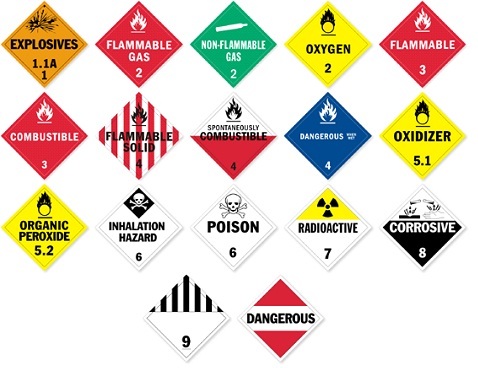Selecting the proper container to store and transport hazardous waste is a key factor in successfully managing wastes and complying with federal regulations.
Choosing the Correct Type of Container
When choosing a container, owners should consider whether the wastes are incompatible or reactive. Combining incompatible wastes is prohibited under 40 CFR 265.177(a), unless owners comply with other regulations found in 40 CFR 265.17(b). By keeping incompatible wastes separated, owners and operators prevent the wastes from reacting with each other and creating a fire or explosion.
Owners should also make sure the waste is not going to react with the container itself. Some wastes are highly corrosive, which may cause a reaction with a metal drum, possibly causing the drum to fail and release the waste. Plastic or plastic-lined drums are good solutions for corrosive wastes. Steel drums are a good choice for non-corrosive and flammable liquids.
 Labeling
Labeling
A United Nations (UN) packaging marking signifies that a container has been manufactured to conform to a UN standard (49 CFR 178.503). The UN markings tell the user details about the package so that they can determine if it will meet their shipping needs.
The marking must include the following:
Enjoying our insights?
Subscribe to our newsletter to keep up with the latest industry trends and developments.
Stay Informed- United Nations symbol
- Packaging identification code (i.e., 1A1 or 4G)
- Letter identifying the performance standard under which the packaging design has been successfully tested, as follows:
- “X” for packaging meeting Packing Group I, II and III tests
- “Y” for packaging meeting Packing Group II and III tests
- “Z” for packaging meeting Packing Group III tests
- Designation of the specific gravity for outer packaging intended to contain liquids (which can be omitted if less than 1.2) or the maximum gross mass, in kilograms, for packaging intended for solids or inner packaging.
- Test pressure in kilopascals rounded down to the nearest 10kPa of hydrostatic pressure for single and composite packaging for liquids, or, for solids and inner packaging, the letter “S.”
- Last two digits of the year of manufacture, except for plastic drums (1H) and jerricans (3H) which must also have the month of manufacture.
- Letters “USA” to indicate the package was manufactured in the U.S. and marked according to these regulations.
- Name and address or symbol of the manufacturer or approval agency certifying compliance. Symbols must be registered with the Associate Administrator for Hazardous Materials Safety.
- Minimum thickness in millimeters (mm) of the packaging materials for metal or plastic drums or jerricans intended for reuse or reconditioning, or the outer packaging of a composite packaging intended for reuse or reconditioning.
For marking requirements of reconditioned packaging, see 49 CFR 178.503 (c).
Hazardous Waste Transporter
A hazardous waste transporter is someone who transports hazardous waste off-site. Hazardous waste transporters must:
- Comply with all requirements federally regulated by 40 CFR Part 263
- Obtain an Environmental Protection Agency (EPA) identification number
- Properly use a manifest
- Maintain manifest and shipping paper records
- Contain and cleanup any spills or discharges while the hazardous waste is in their possession
Transporter Exemptions
There is a provision in the federal regulations that allows, under certain circumstances, generators to haul hazardous waste produced at their facilities to a designated treatment, storage and disposal facility. To be eligible to do this, the generator must:
- Obtain an EPA transporter identification number, regulated by 40 CFR 263.11
- Comply with the applicable Department of Transportation (DOT) requirements for packaging, labeling, marking, and placarding the shipment, regulated by 40 CFR 262.30 through 262.33
A generator that decides to transport its hazardous wastes must call their state regulators to find out what rules apply. Not all states allow state environmental office generators to transport their own hazardous wastes.






















